In 2009, there were 1 million implantable pacemakers. Now, after 9 years, more than 26% of these implants are due for replacement. As the pacemaker market shifts towards leadless and miniaturized pacemakers, we setout to develop a cardiac energy harvesting device that can extend the device's lifespan to 15 years and longer.
Read More
Atrial Fibrillation (AFib) is a form of heart disease that causes irregular beating of the heart, leading to clots, stroke, and heart failure. Approximately 2.7-6.1 million Americans have AFib and this number is only increaseing as the U.S. population ages. Pacemakers, implanted devices that send electrical signals, have been one solution to AFib. In particular, the micra pacemaker, having no wires and being the size of a pill, has been an innovative invention that has improved lives but still has unmet needs.

Unfortunately the reduced size of the pacemaker causes a large battery life deficiency. This causes the need for repeat surgeries where the patients must have the old pacemaker removed while a new one is inserted. With an average battery life of around 12 years, Micra pacemakers require repeat surgeries that are not only expensive but comes with the risk of complications and infection.
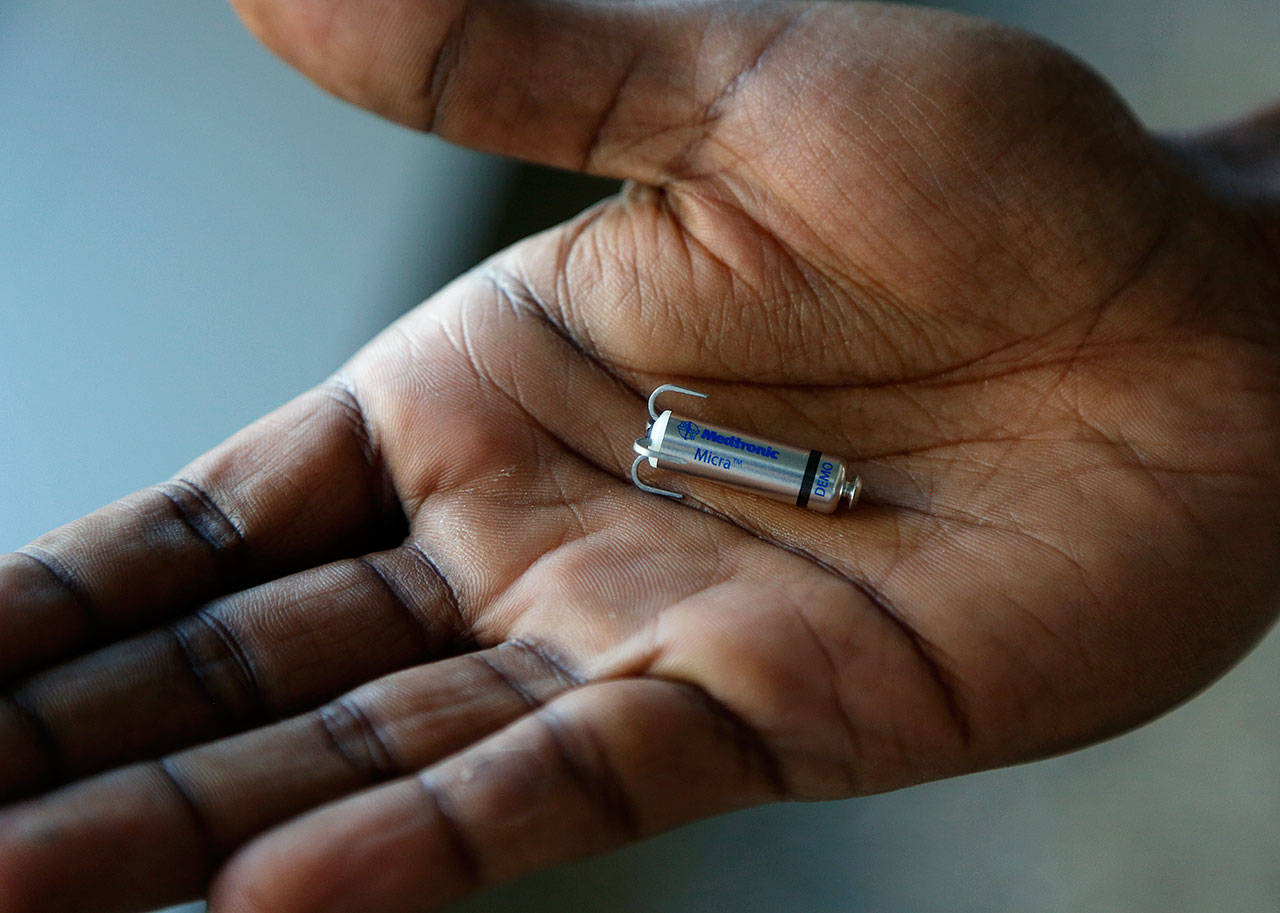
Our solution is a cardiac energy harvesting device composed of oscillating magnets and an inductor coil that can take the mechanical energy of the beating of the heart into electrical energy to charge the pacemaker. By integrating this device with pacemakers, recharging the pacemaker battery can lead to a longer life span. Providing potentially 5 extra years of battery life, Our solution provides patients with a biocompatible, lightweight, and low profile device that fits with the current pacemaker so they are free to live active lives for longer.

The iChargeMe is a cardiac energy harvesting device used to recharge pacemakers.A cardiac energy harvesting device is made from an oscillating magnet and an inductor coil, which is integrated with the leadless pacemaker to increase the battery life and to decrease the need for additional surgeries. The device focuses on the manipulation of pulsatile blood flow to oscillate a magnet attached to a cantilever through an inductor coil to generate voltage based on Faraday’s Law. The computer-aided design is made with SolidWorks and the efficacy of the device is analyzed with Finite Element Analysis to simulate how the device behaves under given conditions. Then the device is created with additive manufacturing. A large-scale benchtop experiment tests the device by using glycerol as the pulsatile blood flow and a pipe apparatus as the heart model for the oscilloscope to detect voltage from the device. To make the fluid flow pulsatile, the pipe will be manually controlled with a faucet in accordance to the average heartbeat rate. Through this test, a working prototype has been developed that can produce a significant amount of voltage and thereby prove the viability of such a device to increase the battery life of the leadless pacemaker.
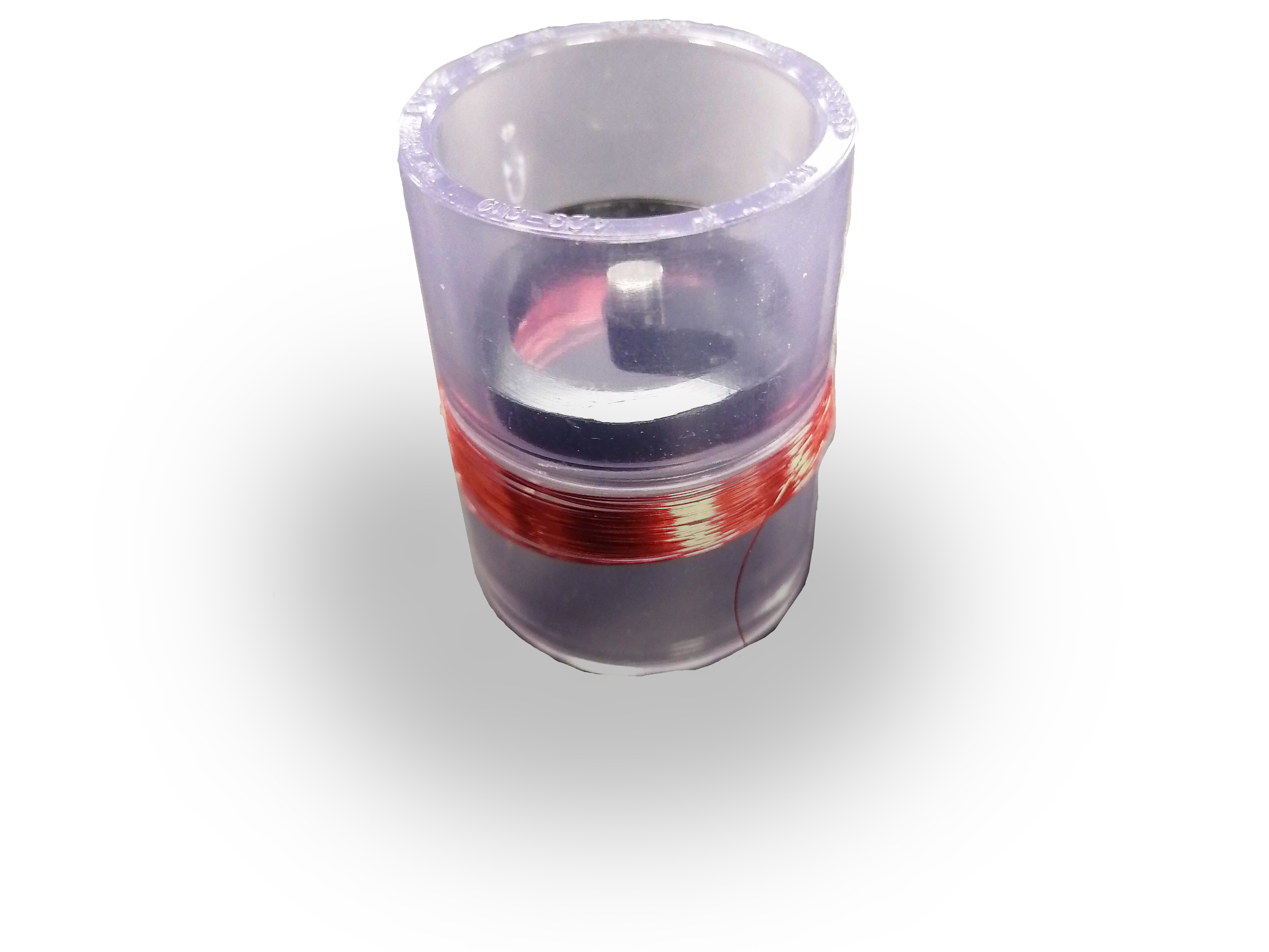
The iChargeMe uses high flows over 12lpm for dynamic charging.
The device can last for a sufficient amount of time inside the heart.
The iChargeMe is small and gives patients freedom to move about.
Like the micra pacemaker, the iChargeMe will sit comfortably inside the heart.
Magnetic magnets provides precise, stable operation with no mechanical wear.

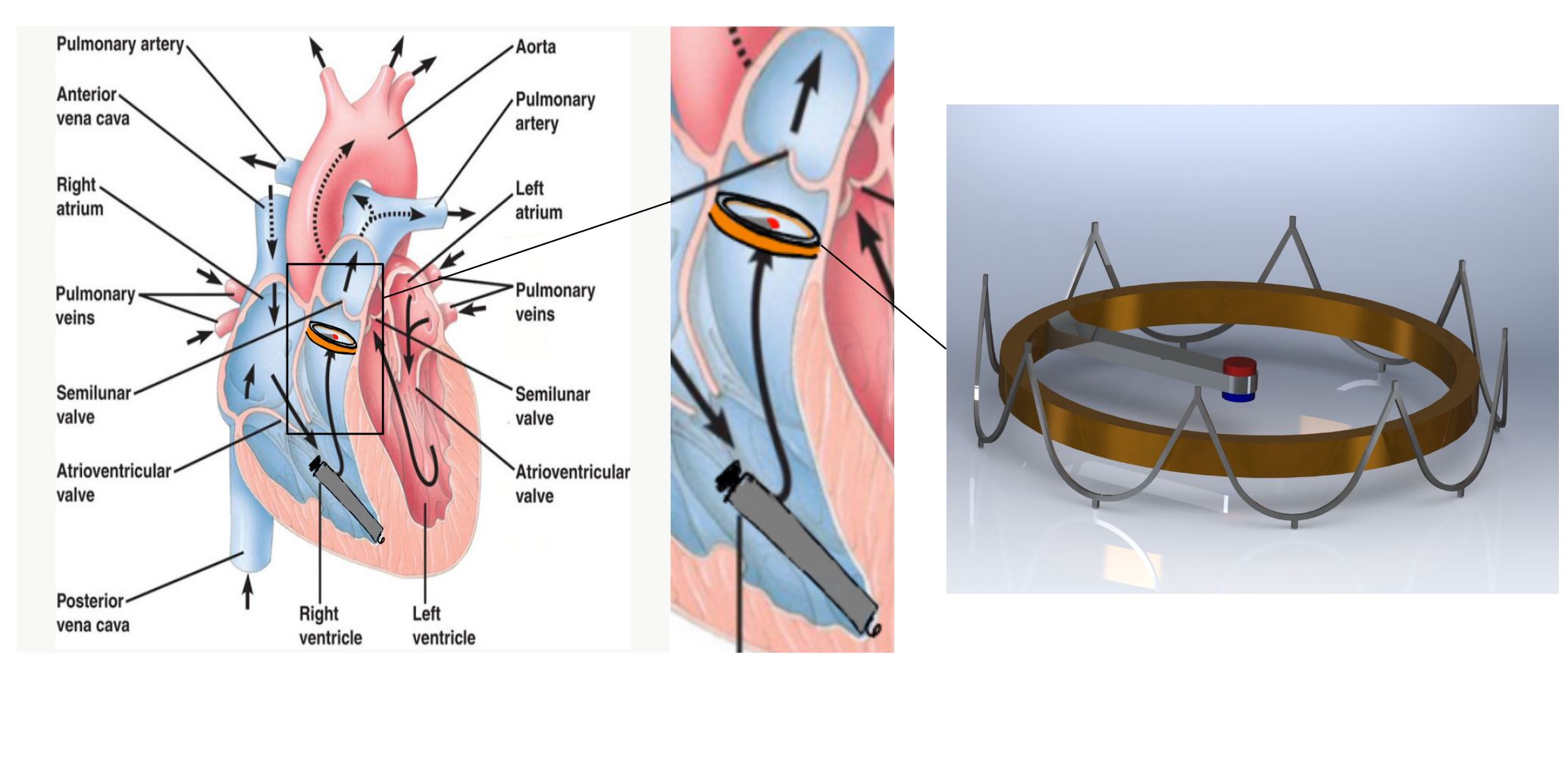
The iChargeMe is designed to be a long-term device that can sit inside the heart and charge the pacemaker to power the patient's heart. It uses electromagnetic theory to provide power to the pacemaker by using an inductor coil. A Magnet is attached to the end of the cantilever that oscillates when blood flows past the device. The Mesh cage is made out of nitinol and is designed to conform and collapse during catheter surgical installation and operation. The magnet oscillates through the inductor coil, generating an electromagnetic field, thus creating a voltage difference to charge the pacemaker.
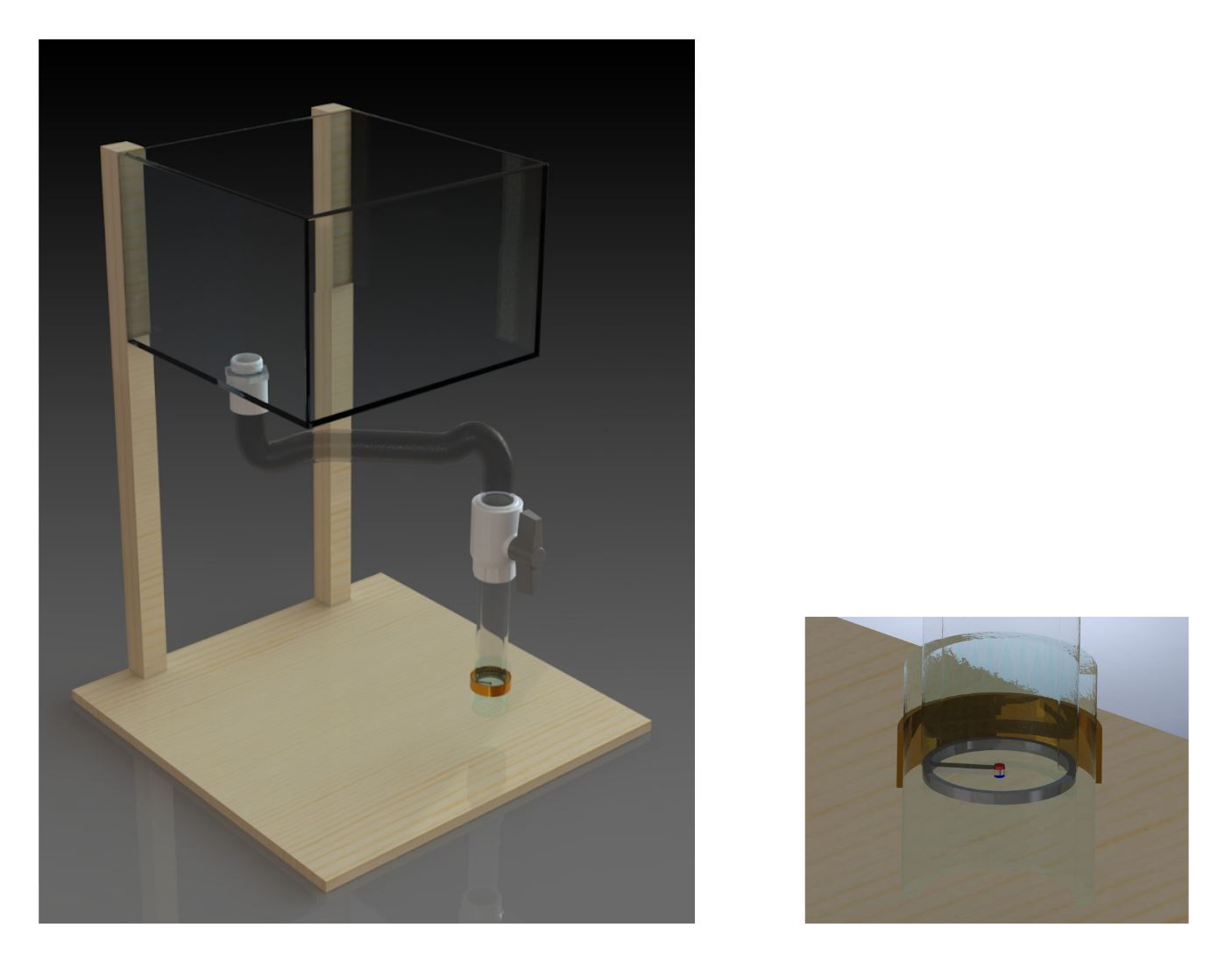
For a person weighing 70 kg, cardiac output at rest is 5 Liters/minute. A heart rate of 70 beats/min, stroke volume is approximately 70 mL As shown in the figure above, we will use this apparatus to simulate fluid flow of stroke volume to create oscillations in the cantilever. The flow pipes act as a heart model with the tube being 25 mm diameter inside so that the coil goes in with the magnet hanging on the cantilever.


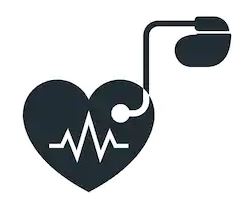
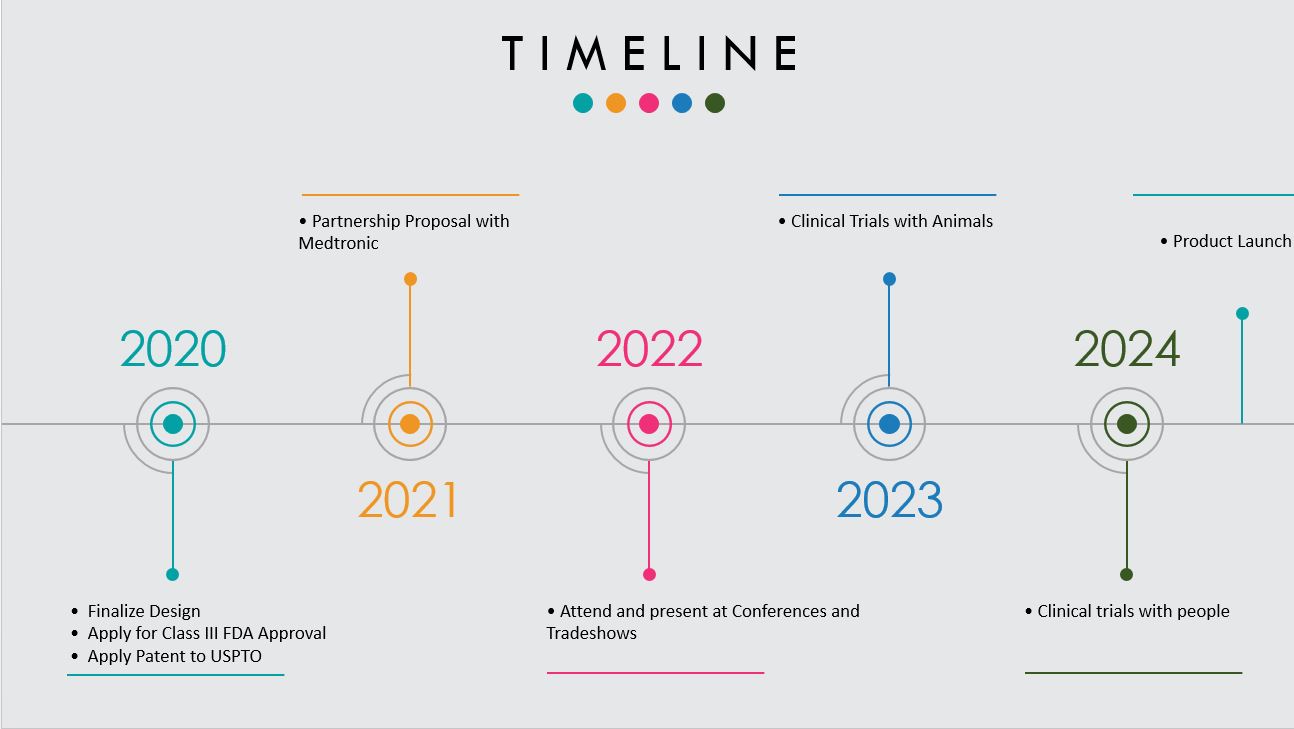



Team Leader
Zachary Siu is the leader of iChargeMe. As part of the School of Biomedical Engineering, his interest lies in all things biomedical device related to cardiology. He has experience leading multiple teams and working in industry.
Contact @ zsiu@uci.edu

Team Leader
Daniel is a Biomedical Engineer from UCI who has experience working with cardiovascular devices in the academic and Medtech industry. He has background in validation and verification testing.
Contact @ drwong1@uci.edu

Head Design Engineer
Mohammed is part of the School of Mechanical Engineering. His interest lies in control systems and electronics. He has experience working on several projects and school experience.
Contact @ malmudhr@uci.edu

Quality Engineer
Anas is part of the School of Biomedical Engineering. Anas is a Biomedical Engineer experienced in Wearable Sensor fabrication and Design Failures Analysis. He also has over fifteen years of business and project management experience.
Contact @ adeirani@uci.edu

Software Designer
Andy is currently studying Materials Science Engineering with a specialization in Biomedical Engineering. He led the design of the device with his knowledge of design principles. He has experience in industry and interning.
Contact @ andyb1.uci.edu
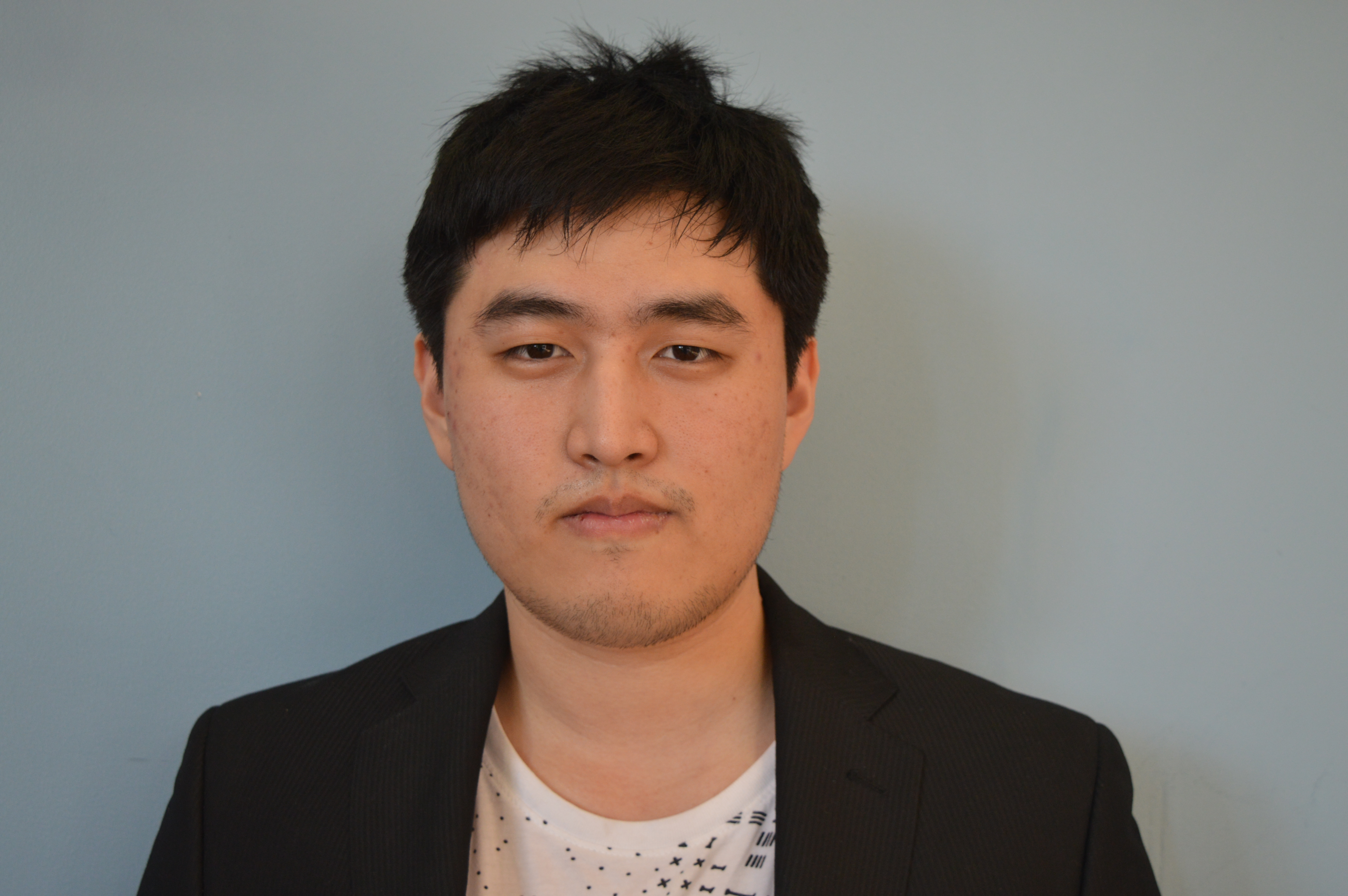
Manufacturing Engineer
Yijoon is currently a 4th year Material Science Engineer with a specialization in Biomaterials. His knowledge of materials and design was important in the making of the device. He has experience in research and industry.
Contact @ yijoonp@uci.edu

Professor at UCI, Ph. D
Dr. William Tang is a Professor at UC Irvine and was our adviser for this project. We thank him for his expertise and unwavering dedication to making our project the best we can.
Contact @ wtang@uci.edu